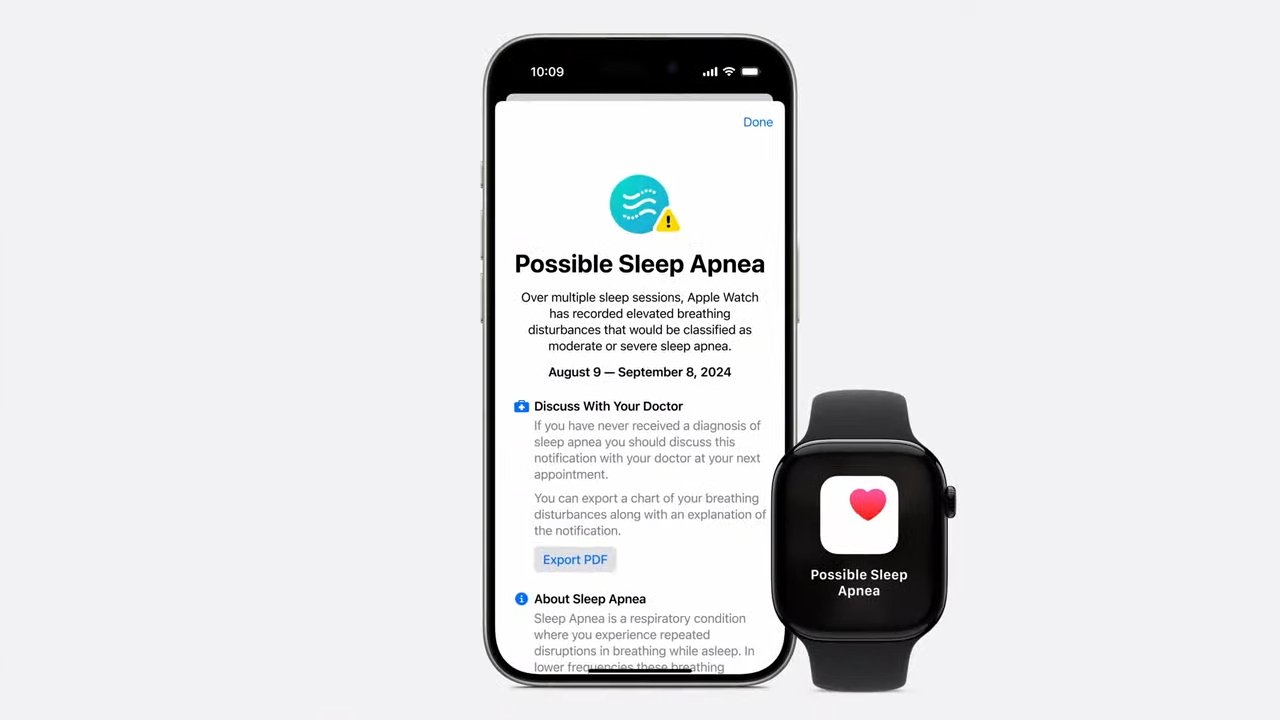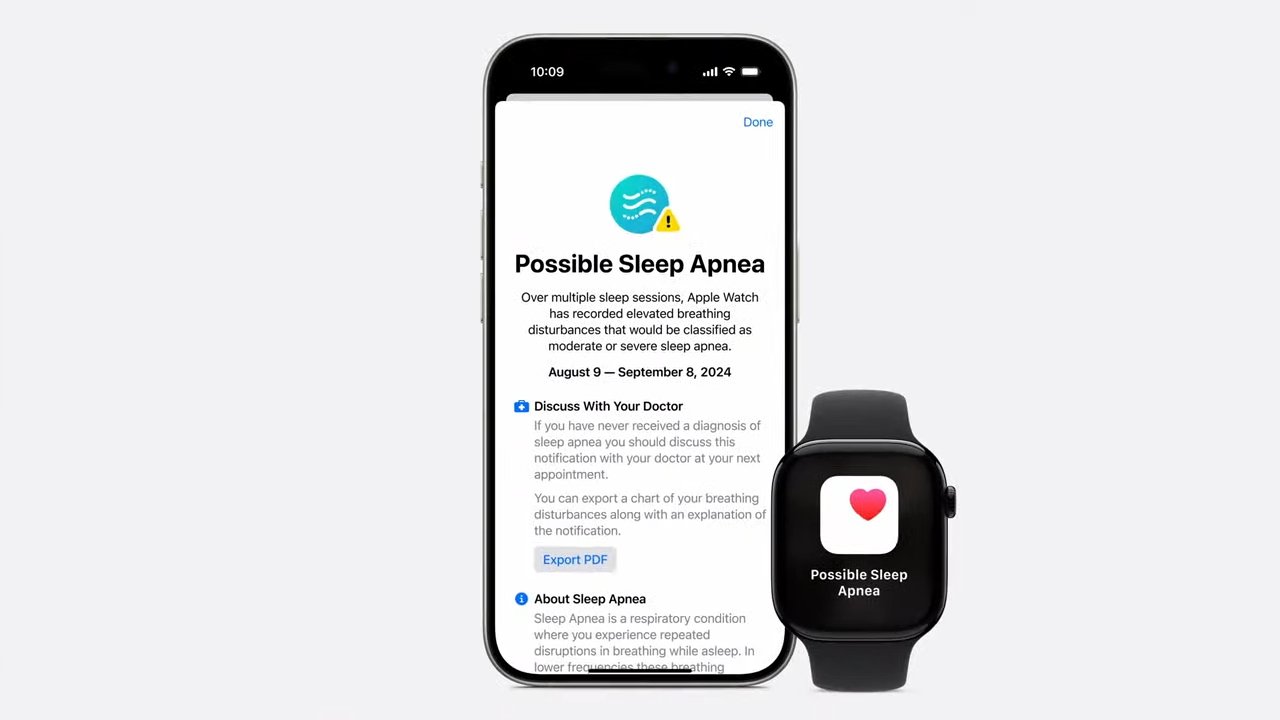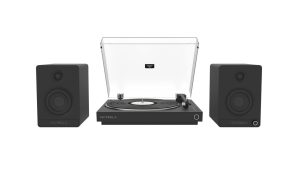
Sleep apnea is estimated to affect more than one billion people worldwide and is linked to a decline in cardiac function, an increased risk for diabetes, and an overall lower quality of life — here’s how the Apple Watch hopes to fix that.
Sleep apnea is a highly prevalent yet severely undiagnosed disorder in which a person experiences repetitive pauses in breathing or excessively shallow breathing while sleeping.
Sleep apnea is typically diagnosed as obstructive sleep apnea (OSA) or central sleep apnea (CSA). OSA is caused when the airway becomes obstructed. Obstructions can be caused by any number of factors, including obesity, back sleeping, a narrow airway, allergies, enlarged tonsils, and many more.
CSA is when the brain fails to regulate one’s breathing rate, which can cause the affected person to miss one or more sleeping cycles.
If left untreated, sleep apnea can lead to high blood pressure, type 2 diabetes, and heart problems. It also results in excessive daytime sleepiness, leading to slower reaction times and increasing the risk of falls and motor vehicle accidents.
Typically, sleep apnea is diagnosed via a sleep study, requiring a person to sleep in a clinic overnight and be monitored by professionals. Not only is this inconvenient or outright impossible for certain individuals, it is also expensive. Sleep studies are often not covered by insurance and can cost well over $1000.
Breathing Disturbances tracked on Apple Watch
That’s why Apple has added a new metric to the list of metrics the Apple Watch tracks, called Breathing Disturbances.
Breathing Disturbances uses the accelerometer to detect small movements at the wrist associated with interruptions to normal respiratory patterns during sleep.
Every 30 days, Apple Watch will analyze breathing disturbance data and notify users if it shows consistent signs of moderate to severe sleep apnea so they can speak to their doctor and formulate a treatment plan.
According to Apple, the Apple Watch sleep apnea notification algorithm was developed using advanced machine learning and an extensive data set of clinical-grade sleep apnea tests. The feature was then validated in a clinical study. In the clinical validation study, every participant identified by the algorithm had at least mild sleep apnea.




